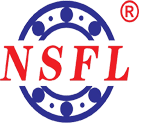23
2025
-
06
Understanding the Role of Cylindrical Roller Bearings in Industrial Applications
Understanding the Role of Cylindrical Roller Bearings in Industrial Applications Table of Contents Introduction to Cylindrical Roller Bearings Types of Cylindrical Roller Bearings Single-Row Cylindrical Roller Bearings Double-Row Cylindrical Roller Bearings Multi-Row Cylindrical Roller Bearings Industrial Applications of Cylindrica
Understanding the Role of Cylindrical Roller Bearings in Industrial Applications
Table of Contents
- Introduction to Cylindrical Roller Bearings
- Types of Cylindrical Roller Bearings
- Single-Row Cylindrical Roller Bearings
- Double-Row Cylindrical Roller Bearings
- Multi-Row Cylindrical Roller Bearings
- Industrial Applications of Cylindrical Roller Bearings
- Benefits of Using Cylindrical Roller Bearings
- Design Considerations for Cylindrical Roller Bearings
- Maintenance Practices for Longevity
- Troubleshooting Common Issues
- The Future of Cylindrical Roller Bearings in Industry
- Conclusion
- Frequently Asked Questions
Introduction to Cylindrical Roller Bearings
Cylindrical roller bearings are essential components in a variety of industrial applications, known for their ability to handle heavy radial loads while providing high-speed performance. Unlike ball bearings, cylindrical roller bearings feature cylindrical-shaped rollers that reduce friction and enhance the load distribution. These bearings are designed to accommodate both axial and radial loads, making them versatile and indispensable in many sectors.
Types of Cylindrical Roller Bearings
Understanding the different types of cylindrical roller bearings is crucial for selecting the right one for specific applications. Each type has unique features that cater to particular needs.
Single-Row Cylindrical Roller Bearings
Single-row cylindrical roller bearings are the most commonly used type. They can support high radial loads and are suitable for various applications where space is limited. Their design allows for easy installation and maintenance, making them a preferred choice in many industries.
Double-Row Cylindrical Roller Bearings
Double-row cylindrical roller bearings are designed to accommodate higher loads compared to single-row versions. They provide increased stability and are often used in applications that require a greater load-bearing capacity, such as heavy machinery and industrial gearboxes.
Multi-Row Cylindrical Roller Bearings
Multi-row cylindrical roller bearings are specialized bearings that consist of more than two rows of rollers. They are engineered for extremely high load conditions, making them suitable for applications like large wind turbine generators and heavy-duty industrial machinery.
Industrial Applications of Cylindrical Roller Bearings
Cylindrical roller bearings are utilized in various industries due to their robustness and reliability. Let's explore some of the key applications.
Manufacturing
In the manufacturing sector, cylindrical roller bearings play a vital role in machinery such as lathes, milling machines, and conveyors. Their ability to support heavy loads and tolerate misalignment makes them ideal for high-precision manufacturing environments.
Transportation
The transportation industry relies heavily on cylindrical roller bearings in vehicles such as trucks, trains, and buses. These bearings contribute to the smooth operation of axles and wheel hubs, ensuring safety and efficiency in transport.
Energy Sector
In the energy sector, particularly in wind and hydro power generation, cylindrical roller bearings are crucial for turbine operation. Their durability and capacity to withstand harsh conditions significantly enhance the performance and longevity of energy-producing equipment.
Benefits of Using Cylindrical Roller Bearings
Cylindrical roller bearings offer numerous advantages that make them a preferred choice in industrial applications:
1. **High Load Capacity**: They can support heavy radial loads, making them suitable for high-stress environments.
2. **Low Friction**: The cylindrical shape of the rollers reduces friction, which enhances efficiency and decreases energy consumption.
3. **Versatility**: Suitable for various applications across multiple sectors, ensuring compatibility with diverse machinery designs.
4. **Reduced Maintenance**: Their robust design leads to longer service intervals, minimizing downtime and maintenance costs.
Design Considerations for Cylindrical Roller Bearings
When designing systems that incorporate cylindrical roller bearings, several factors must be taken into account:
- **Load Requirements**: Assess the maximum load that the bearing will encounter in its operating environment.
- **Speed of Operation**: Consider the rotational speed of the application, as it influences the choice of bearing type and lubrication methods.
- **Environmental Conditions**: Evaluate factors such as temperature, humidity, and exposure to contaminants, which may affect bearing performance.
Maintenance Practices for Longevity
To ensure the longevity and optimal performance of cylindrical roller bearings, regular maintenance is essential. Here are some key practices:
- **Lubrication**: Proper lubrication is crucial for minimizing friction and preventing wear. Use the correct type and amount of lubricant as specified by the manufacturer.
- **Inspection**: Regularly inspect bearings for signs of wear, misalignment, or contamination. Early detection of issues can prevent costly failures.
- **Cleaning**: Keep the bearing and surrounding areas clean to prevent foreign particles from entering the bearing housing.
Troubleshooting Common Issues
Despite their robustness, cylindrical roller bearings can encounter issues. Here are some common problems and their solutions:
- **Excessive Noise**: This may indicate misalignment or insufficient lubrication. Check the alignment and ensure proper lubrication levels.
- **Overheating**: Excessive heat can result from inadequate lubrication or overload. Monitor operating conditions and adjust as necessary.
- **Vibration**: Unusual vibrations can signal wear or damage. Conduct a thorough inspection and replace any faulty components.
The Future of Cylindrical Roller Bearings in Industry
As industries evolve, the demand for more efficient and reliable bearing solutions continues to grow. Future developments in cylindrical roller bearings are likely to focus on:
- **Smart Technology**: Integrating sensors into bearings for real-time monitoring of performance and health.
- **Advanced Materials**: Utilizing lightweight, durable materials to enhance load capacity and reduce friction even further.
- **Sustainability**: Developing eco-friendly lubricants and manufacturing processes to minimize environmental impact.
Conclusion
Cylindrical roller bearings are integral to the functioning of industrial machinery across various sectors. Their unique design, ability to handle heavy loads, and low maintenance requirements make them a preferred choice for engineers and manufacturers alike. Understanding their role and applications not only enhances operational efficiency but also contributes to the overall success of industrial operations. As technology advances, the future of cylindrical roller bearings promises even greater innovations that will further solidify their importance in industrial applications.
Frequently Asked Questions
1. What are cylindrical roller bearings used for?
Cylindrical roller bearings are primarily used to support heavy radial loads and provide high-speed performance in various industrial applications, including manufacturing, transportation, and energy sectors.
2. How do cylindrical roller bearings differ from ball bearings?
Cylindrical roller bearings use cylindrical-shaped rollers, allowing them to handle higher radial loads compared to ball bearings, which use ball-shaped elements. This design also reduces friction and enhances load distribution.
3. How often should cylindrical roller bearings be lubricated?
The frequency of lubrication depends on the operating conditions and the manufacturer's recommendations. Regular inspections should determine the need for lubrication.
4. What are the common causes of bearing failure?
Common causes of bearing failure include inadequate lubrication, misalignment, contamination, and excessive loads. Understanding these factors can help prevent failure.
5. Can cylindrical roller bearings be used in high-temperature applications?
Yes, cylindrical roller bearings can be designed for high-temperature applications when using suitable materials and lubricants that can withstand extreme temperatures. Always consult the manufacturer for specific ratings.
10% DISCOUNT FOR NEW CUSTOMERS

WhatsApp:+8613211157555
Tel: +8613211157555
Address:Room 1106, 11th Floor, No. 23, Fengshan West Road, Jinbang Community, Daliang Street, Shunde District, Foshan City, Guangdong Province
Copyright 2025 Schaeffler (Guangdong) Transmission Technology Co., Ltd. SEO Business license




